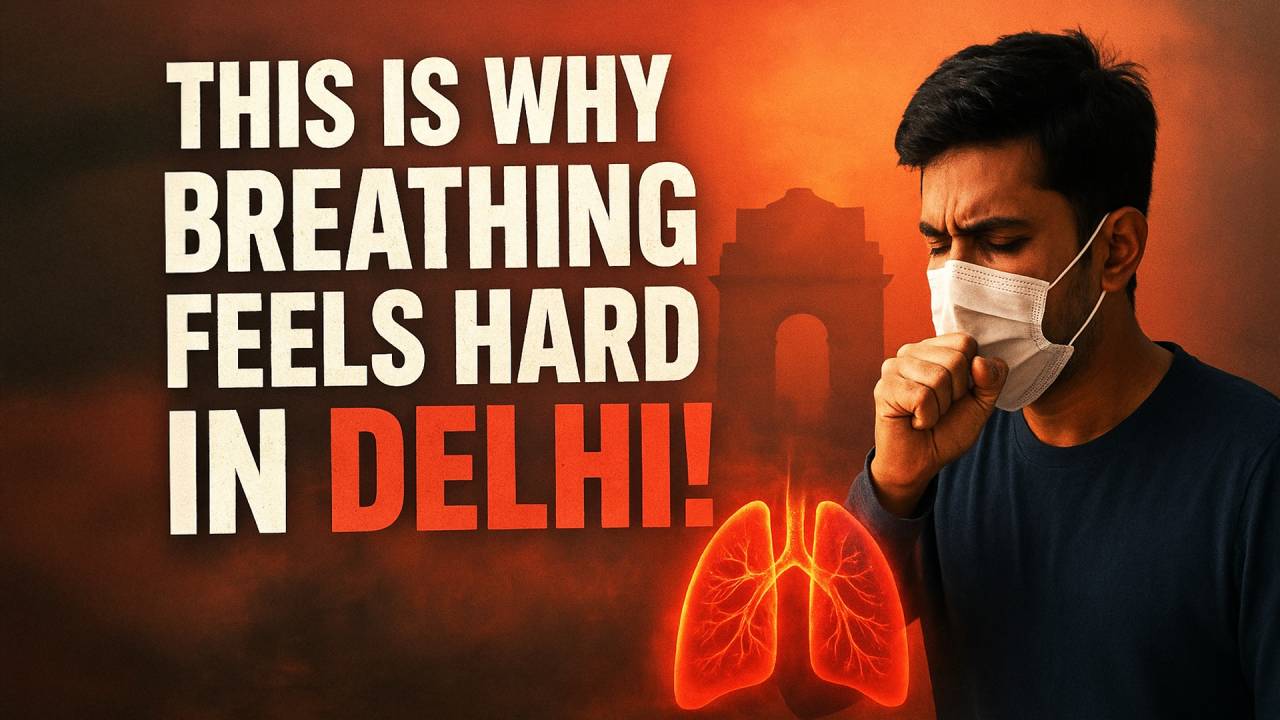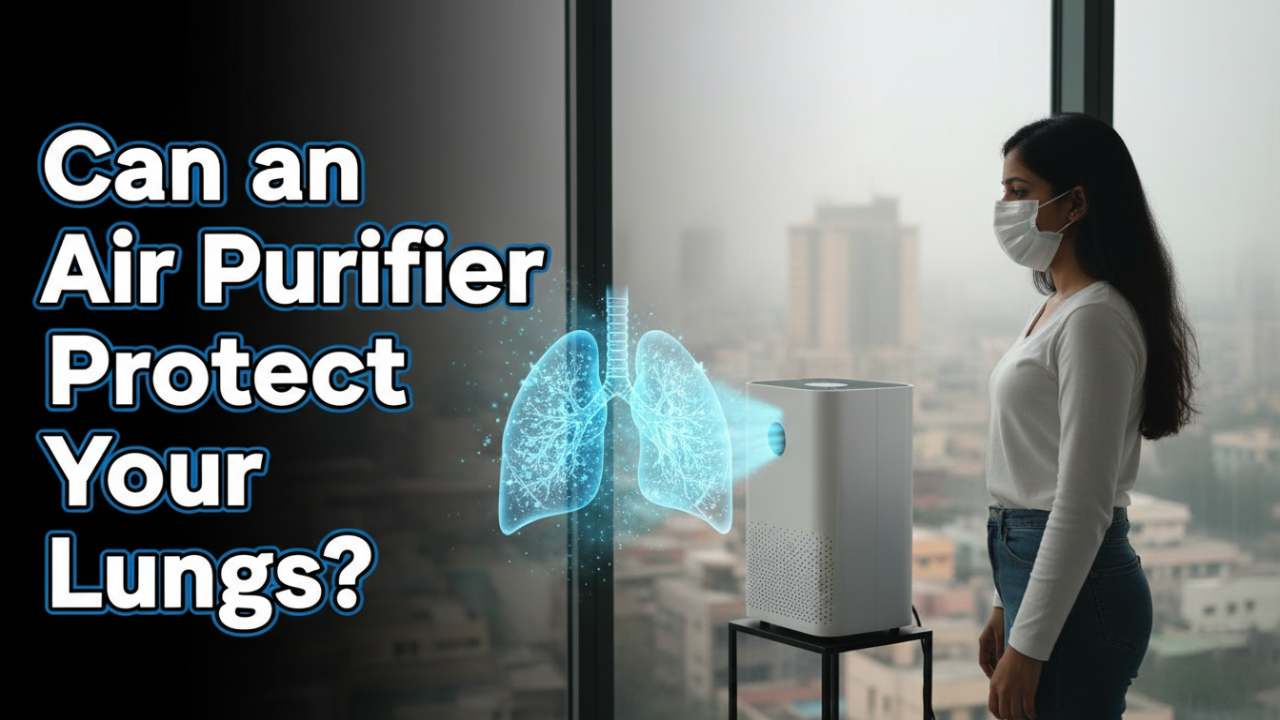The Choking City: How Air Pollution is Fueling Delhi NCR's Asthma Epidemic
Verified By Dr. A.S. Sandhya | 05-Nov-2025
Dr. A.S. Sandhya, Consultant Pulmonologist at Kailash Hospital, Noida, reviews the morning's patient list with a familiar sense of urgency. "When the AQI crosses 400, our OPD fills with patients—not just the elderly or known asthmatics, but young children and healthy adults, all struggling to breathe. This is no longer a seasonal issue; it's a permanent public health crisis. We are witnessing a direct and alarming increase in asthma due to air pollution in our community," she states, her concern palpable.
Noida, like much of the National Capital Region, is grappling with an environmental emergency. The toxic haze that blankets the city each winter is more than an inconvenience; it is a primary driver of respiratory disease. The link between asthma due to air pollution is now undeniable, transforming the city's air into a pervasive trigger for wheezing, coughing, and life-threatening attacks. This article, drawing on the expert insights of Dr. A.S. Sandhya and the advanced pulmonary care team at Kailash Hospital, Noida, explores this critical connection and provides a roadmap for protection and management.
Table of Content
To understand why air pollution is so devastating for asthma patients, one must understand the mechanics of both the disease and the pollutants.
Asthma is a chronic inflammatory condition of the bronchial tubes (airways). When exposed to a trigger, these airways become inflamed, the muscles around them tighten, and they produce excess mucus, leading to narrowing and obstruction.
Air pollution, particularly the fine particulate matter that defines Delhi NCR's winter smog, acts as a potent and relentless trigger. The key offenders are:
- PM2.5 (Particulate Matter 2.5): These are microscopic particles, 30 times smaller than the width of a human hair. Their size allows them to bypass the body's natural defenses in the nose and throat, traveling deep into the smallest airways and alveoli (air sacs) of the lungs.
- Dr. Sandhya explains: "Think of PM2.5 as tiny shards of glass. They embed themselves in the delicate lung tissue, causing direct physical irritation and triggering a powerful inflammatory response. For an asthmatic, this is like pouring gasoline on a fire."
- Nitrogen Dioxide (NO2): Primarily emitted from vehicle exhaust, NO2 is a powerful respiratory irritant. It can inflame the lining of the airways, increase sensitivity to other allergens, and reduce immunity to lung infections.
- Ozone (O3): While beneficial in the upper atmosphere, at ground level, ozone is a harmful pollutant. It acts like a sunburn on the lungs, causing inflammation and damaging lung tissue.
"The combination of these pollutants creates a perfect storm for the respiratory system," says Dr. Sandhya. "They don't just trigger single attacks; they cause a state of chronic, low-grade inflammation that makes the airways hyper-responsive, meaning they react violently to even minor triggers like cold air or mild exertion."
Also read: Unlocking Relief: How to Relieve Chest Tightness and Shortness of Breath
The correlation is no longer anecdotal; it is backed by robust data. Studies from across the globe, including India, have shown:
- Higher Prevalence: Areas with high levels of PM2.5 and NO2 consistently show higher rates of asthma diagnosis.
- Increased Hospitalizations: There is a direct, measurable spike in emergency room visits and hospital admissions for asthma attacks within 24-48 hours of a spike in air pollution levels.
- New-Onset Asthma: Pollution is not just a trigger for existing asthma; it is now recognized as a cause for developing the disease in previously healthy individuals, especially children.
- Reduced Lung Development: Children growing up in highly polluted areas like Delhi NCR have been shown to have significantly lower lung function growth, predisposing them to a lifetime of respiratory problems.
"At Kailash Hospital, Noida, we see this data come to life in our clinics every day," notes Dr. Sandhya. "The increase in asthma due to air pollution is visible in the worried faces of parents whose children need stronger inhalers each year, and in the elderly who can no longer step outside for their morning walk. This is a slow-motion disaster for lung health."
While polluted air spares no one, certain groups are more vulnerable:
- Children: Their lungs are still developing, they breathe faster, and they spend more time outdoors.
- The Elderly: Often have pre-existing heart or lung conditions.
- Outdoor Workers: Construction workers, traffic police, and delivery personnel face prolonged, high-dose exposure.
- Pregnant Women: Exposure can affect fetal lung development.
- Existing Asthmatics and COPD Patients: Their compromised airways are exquisitely sensitive to pollution.
Also read: Understanding Chest Heaviness after Eating: Causes, Symptoms, and Solutions
While systemic change is needed to clean our air, individuals can take proactive steps to mitigate the risk. Dr. Sandhya and the team of top pulmonologist in Noida at Kailash Hospital recommend a multi-layered defense strategy:
1. Monitor and Avoid:
- Check AQI Daily: Use reliable apps to monitor the Air Quality Index. When it is "Poor" (AQI 201-300), "Very Poor" (301-400), or "Severe" (401-500), take extra precautions.
- Limit Outdoor Activity: On bad air days, avoid strenuous outdoor exercise like running or cycling. Shift workouts indoors.
- Time Your Outings: Pollution levels are often highest during peak traffic hours (morning and evening). Plan essential outings for other times.
2. Create a Clean Air Sanctuary at Home:
- Use Air Purifiers: Invest in a good-quality air purifier with a HEPA filter for your bedroom and main living area. This is one of the most effective personal interventions.
- Keep Windows Closed: On high-pollution days, keep windows and doors closed to prevent toxic air from entering.
- Incorporate Air-Purifying Plants: While not a substitute for purifiers, plants like snake plants and peace lilies can help remove some toxins.
3. Use Respiratory Protection:
- Wear N95 Masks: A well-fitted N95 mask can filter out over 95% of PM2.5 particles. This is essential for any prolonged outdoor exposure on smoggy days.
4. Medical Management is Key:
- Stick to Your Action Plan: If you have asthma, it is crucial to consistently use your controller (preventive) medications as prescribed. Do not wait for an attack to start.
- Carry Rescue Inhalers: Always have your quick-relief inhaler with you.
- Get a Flu Shot: Respiratory infections combined with polluted air can be devastating. Annual vaccination is critical.
As a premier healthcare institution and the best hospital in Noida for comprehensive care, Kailash Hospital is at the forefront of managing this crisis.
- Advanced Pulmonary Diagnostics: The hospital is equipped with state-of-the-art Pulmonary Function Test (PFT) labs to accurately diagnose and monitor asthma severity.
- Specialized Asthma & COPD Clinics: These clinics, led by top pulmonologist in Noida like Dr. A.S. Sandhya, provide personalized management plans, including education on inhaler techniques and pollution avoidance strategies.
- 24/7 Emergency Care: For severe asthma attacks exacerbated by pollution, the hospital's emergency department is staffed and equipped to provide immediate, life-saving care, including nebulization and advanced respiratory support.
- Patient Education and Awareness: The hospital conducts workshops and support groups to empower patients and the community with knowledge to protect their lungs.
The challenge of asthma due to air pollution is daunting, but it is not insurmountable. It demands a two-pronged approach: robust individual action and unwavering societal commitment to cleaner air policies.
As Dr. A.S. Sandhya concludes, "Every breath should not be a battle. While we at Kailash Hospital, Noida will continue to treat those affected, the ultimate cure lies outside our walls. It lies in cleaner fuels, sustainable transportation, and green energy. Until then, my message to the people of Delhi NCR is this: be vigilant, be proactive about your lung health, and do not ignore symptoms like a persistent cough or wheeze. Your lungs are your most vital asset. Protect them, and know that expert help is always available."
Your lungs are under attack. Do not wait for a crisis. Consult a pulmonologist to assess your respiratory health and build your defense against the toxic air.



 +91-9711918451
+91-9711918451
 international.marketing@kailashhealthcare.com
international.marketing@kailashhealthcare.com






